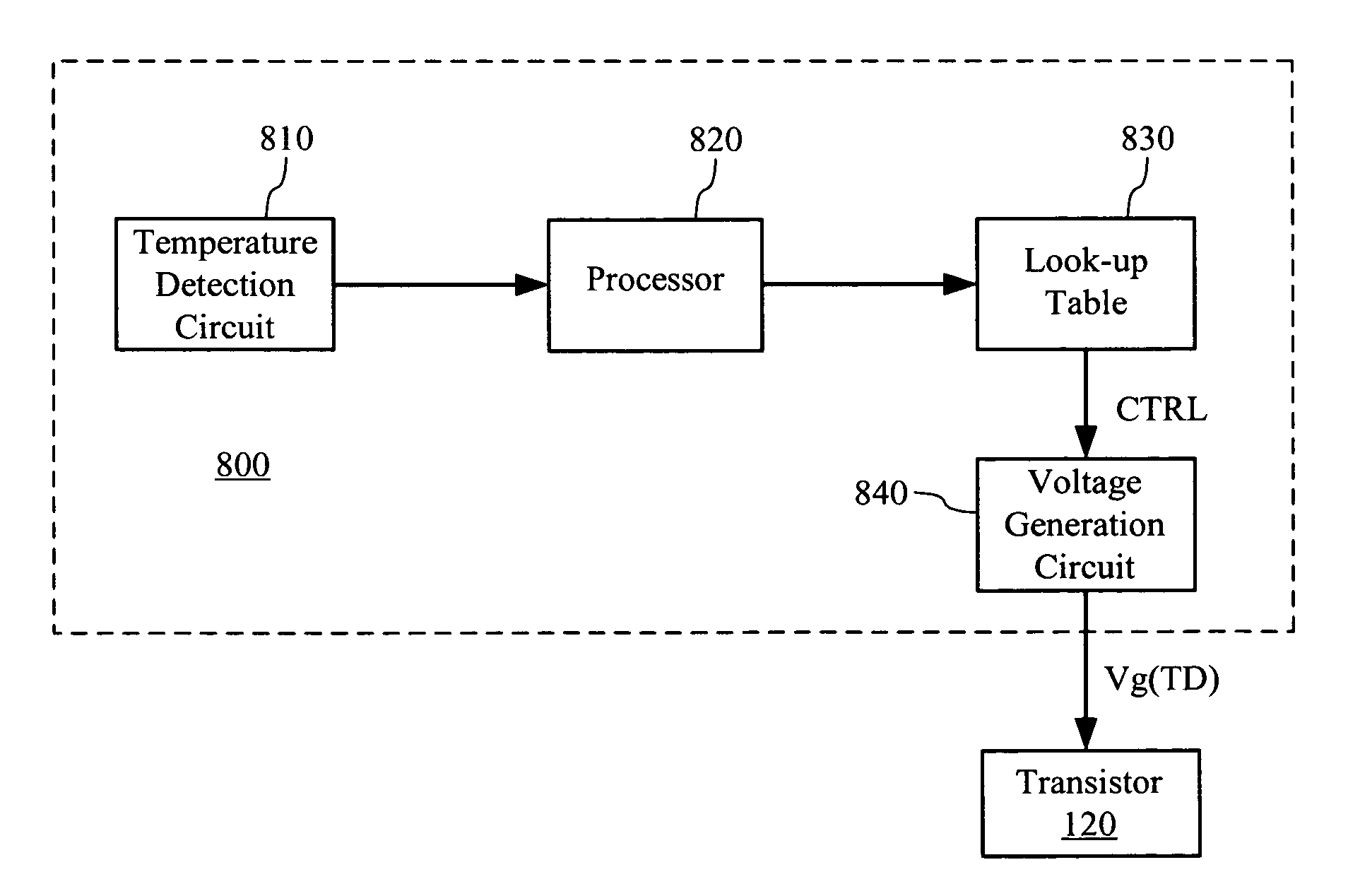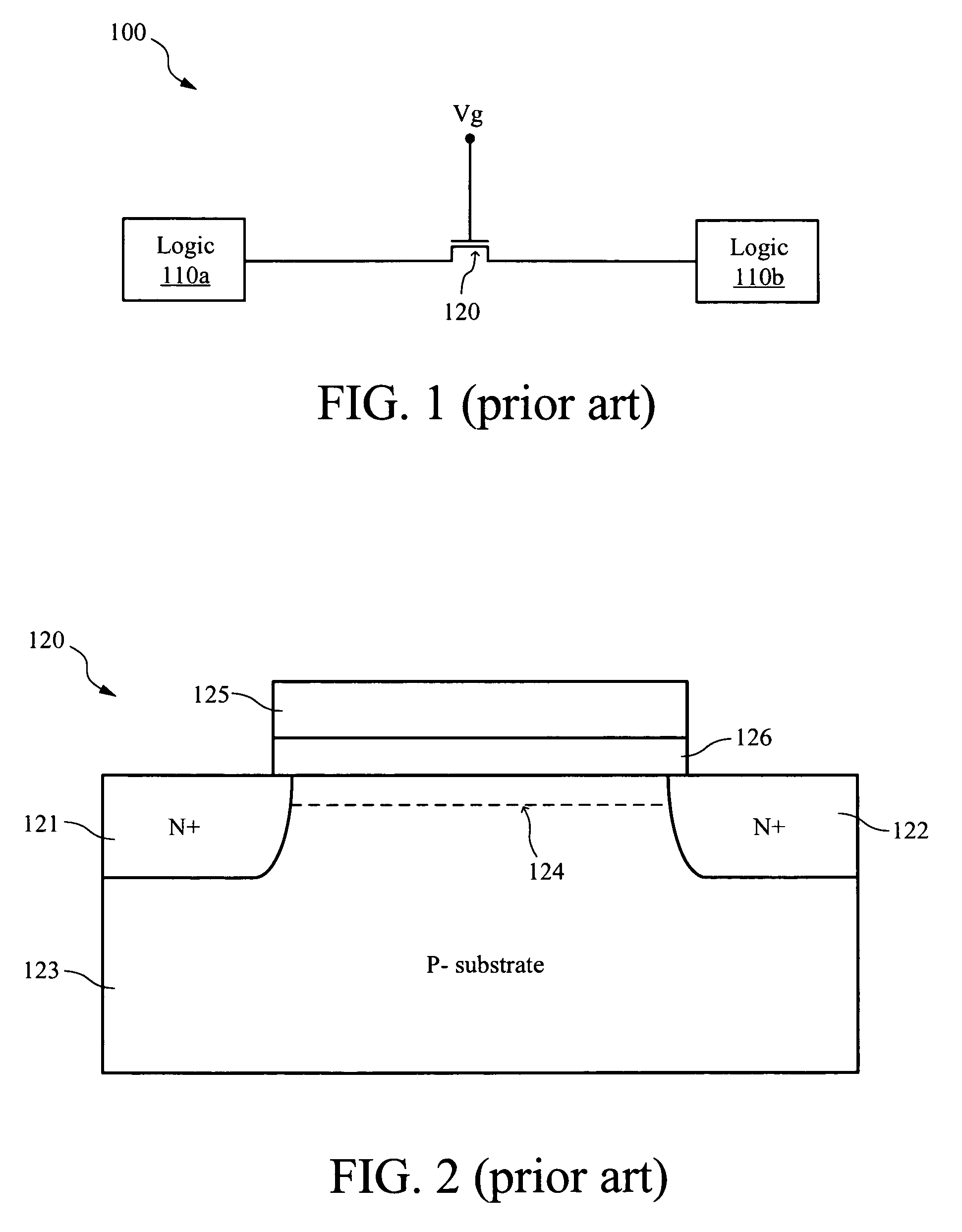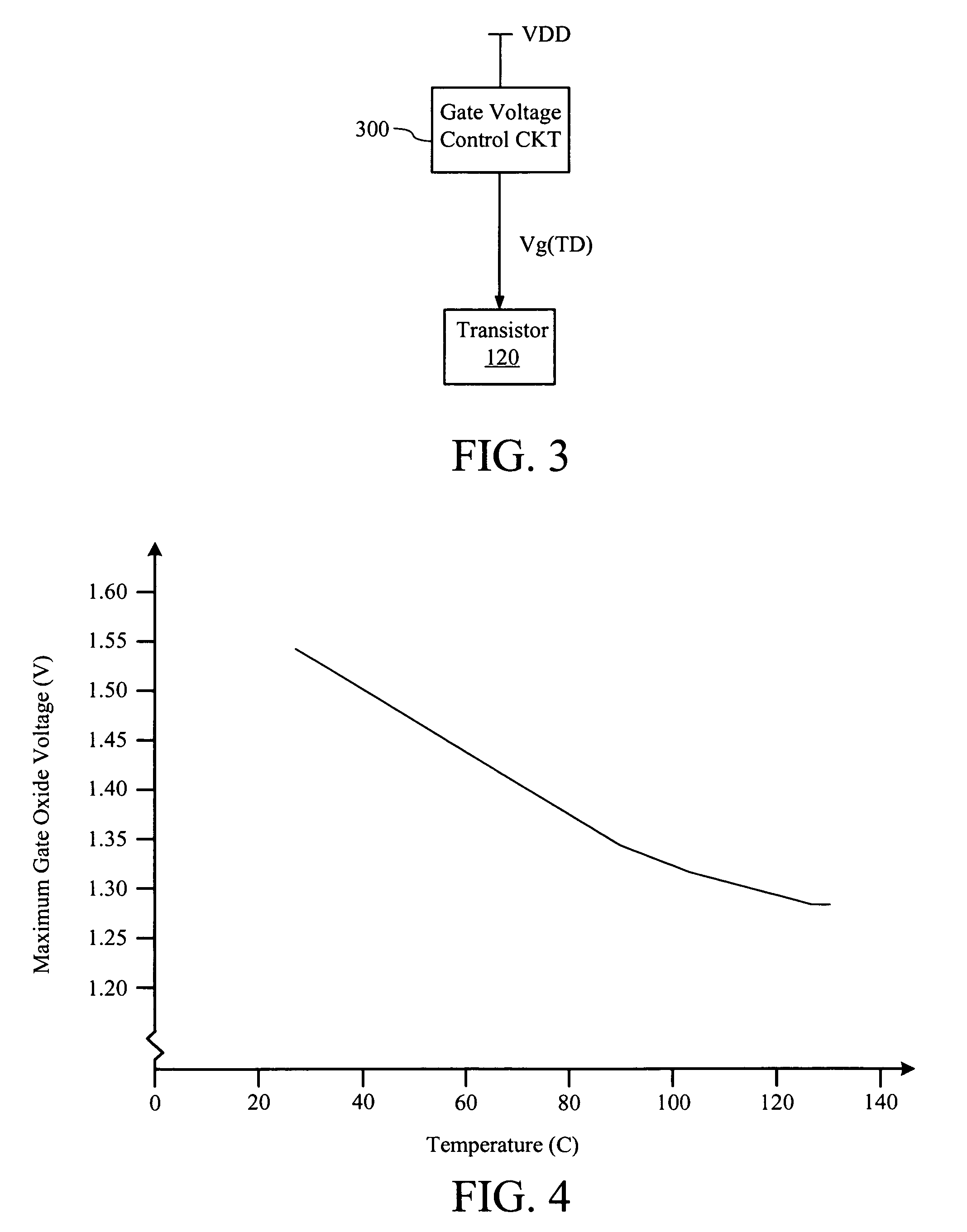Method and apparatus to improve pass transistor performance
a technology of pass transistor and transistor performance, which is applied in the direction of cad circuit design, program control, instruments, etc., can solve the problems of transistor b>120/b>'s performance degradation at lower temperatures, and achieve the effects of improving transistor performance, improving transistor performance, and reducing the on-state gate voltag
- Summary
- Abstract
- Description
- Claims
- Application Information
AI Technical Summary
Benefits of technology
Problems solved by technology
Method used
Image
Examples
Embodiment Construction
[0019]Embodiments of the present invention are described below in the context of improving the performance of an exemplary NMOS transistor for simplicity only. It is to be understood that present embodiments are equally applicable for improving the performance of PMOS transistors. Further, although not shown in the figures for simplicity, embodiments of the present invention may also be used to improve the performance of other transistor architectures, for example, floating gate transistor devices commonly used to form non-volatile memory devices such as EPROM cells, EEPROM cells, flash memory cells, and the like. In the following description, for purposes of explanation, specific nomenclature is set forth to provide a thorough understanding of the present invention. For example, as used herein, the term “gate voltage” refers to a transistor's on-state gate voltage, e.g., the gate voltage required to create a transistor gate-to-source voltage differential that sufficiently exceeds t...
PUM
 Login to view more
Login to view more Abstract
Description
Claims
Application Information
 Login to view more
Login to view more - R&D Engineer
- R&D Manager
- IP Professional
- Industry Leading Data Capabilities
- Powerful AI technology
- Patent DNA Extraction
Browse by: Latest US Patents, China's latest patents, Technical Efficacy Thesaurus, Application Domain, Technology Topic.
© 2024 PatSnap. All rights reserved.Legal|Privacy policy|Modern Slavery Act Transparency Statement|Sitemap



